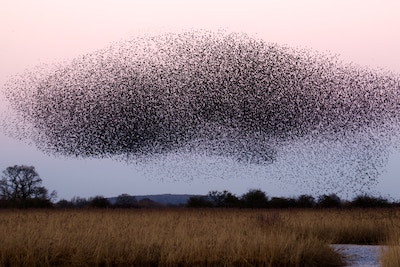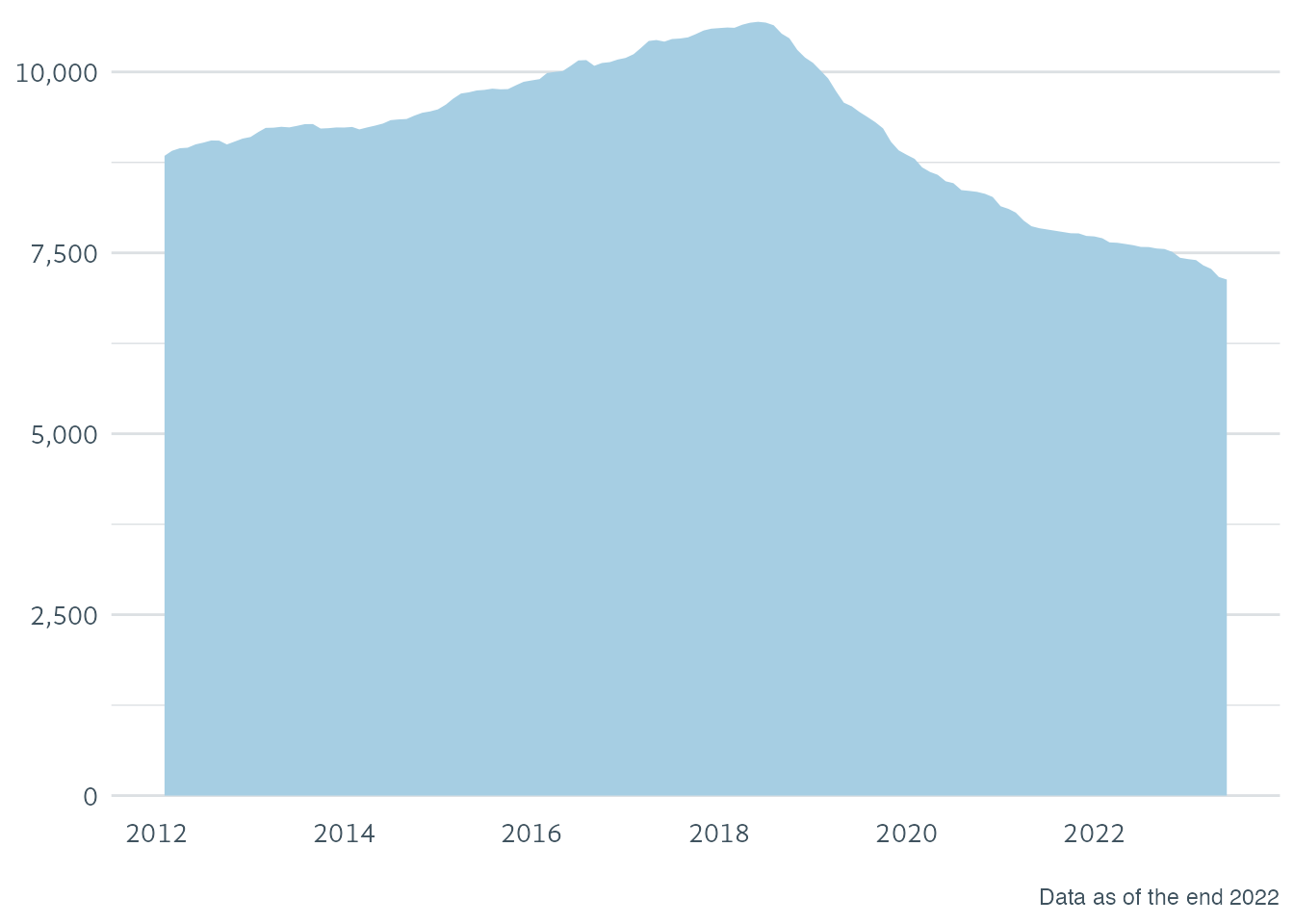
Membership
Historical Data from the Shambhala Database
Who is involved with Shambhala?
Photo by James Wainscoat on Unsplash

Shambhala membership has shrunk and continues shrinking.
Even though our membership topped out at 10,700, Shambhala has attracted over 20 times that many people to our programs and other offerings, as recorded in the Shambhala Database.
What does membership tell us?
Membership is only one of the ways people participate in Shambhala and support it. Participation is an individual decision based on many of the factors explored elsewhere in this Societal Mirror. What criteria are used to count members have varied over time and across locations. Furthermore, what members think and what’s recorded in the Shambhala Database (SDB) are often different.
Membership is recorded at a Centre or Group level with very strict criteria and careful recording in some locations; in some cases records have been kept less rigorously and definitions have been more relaxed. Nevertheless, over time counting the number of members in the SDB reflects the ebb and flow of participation. The same is true for the SDB category “Friend of Shambhala” which is used to keep in touch with people who are connected but might currently be less involved.
Members and Friends depicted in this Societal Mirror are a minority
The survey on which this Societal Mirror is based was sent to members and friends as recorded in the SDB at the end of December 2022. However, those members and friends represented only the most-involved five percent of the total number of people recorded in the SDB at that time. Another way of thinking about it, is that, according to our records, for every member or friend in the SDB, 20 people have registered for an event, subscribed to a newsletter, participated in discussions on one of our sites, or been members in the past.
Percent of SDB records by membership status
Click here to hide or show this table
| Membership Status | Percent |
|---|---|
| Friend of Shambhala | 1.32% |
| Ex-member | 3.75% |
| Member | 3.96% |
| Non-member | 90.97% |
Composition of the current Shambhala Community: Membership and first contact with Shambhala
More of those who ended their membership first connected with Shambhala between 1999 and 2012.
By contrast, among vajrayana practitioners, around twice as many have remained with Shambhala as have ended their membership, and this is regardless of when they first connected with Shambhala

What does membership variation tell us?
Membership changes over time
We can see levels of interest in Shambhala reflected in the changes in membership over time.
Total Shambhala membership changes between 2012 and 2022
Although the concept of “member” existed from the early days in the 1970s, keeping and centralizing records was not universal throughout Shambhala until much later. The following graph shows total membership in 2012 to 2022, when membership counts have been more reliable. While the subsequent graphs on this page focus on the period 2016 to 2022 only, viewing the trend from 2012 enables us to see how membership in Shambhala increased gradually to a peak of about 10,700 in June of 2018. This was the month in which specific allegations of misconduct were revealed, and total membership declined after that and are still declining.

When membership is increasing, more people are joining than are leaving Shambhala. However, even when membership is declining, there are people who are joining, albeit in smaller numbers.
Shambhala’s membership is always in flux
Just as our meditation practice fluctuates over time, so does membership. A Shambhala Centre or Group records both joining and leaving events in the SDB. Total membership then goes up or down when added up over all centres and groups. For example, in the following graph, 1,215 people joined in 2016 and 764 left; in 2022, there were 174 people joining and 441 leaving.
Why people join or leave can have many reasons, including:
Joining as a new member; after participation in classes or events and making a connection with Shambhala people decide to support their local centre or group. As shown later on, they may have connected a long time before, so their first connection and becoming a member do not necessarily coincide.
Moving from one place to another; if there is a centre or group in both places, they may be recorded as leaving in one place and joining in another, with a net change of zero.
Leaving: becoming an ex-member; people leave Shambhala for a host of personal reasons including financial constraints, moving locations, and disaffection with Shambhala.
Rejoining after becoming an ex-member; there are many instances where someone who has dropped their membership for a period of time decides to resume their membership. In our statistics, they are counted as someone “joining”, regardless of their previous membership status.
Net membership change by year

Joining and Leaving Patterns by time of first contact with Shambhala
Although joining Shambhala as a member is a definite event when it’s recorded in the SDB, there are several alternative definitions of “first contact.” Someone may have read a book and even begun a meditation practice but not shown up in the SDB for months or years afterwards. In some cases “first contact” is determined by the first time a person registered for a class or event. In other cases, a local database administrator may record “first contact” as the date when someone says they first met their teacher. In those cases it may be a matter of pride to remember exactly when that first contact occurred.
For Societal Mirror graphs and tables that compare generations across time, we have combined data from events to create an estimate of “first contact”. We compared self-reported first contact in the SDB, first program attended, when the SDB record was created. Those people were then grouped into generations or cohorts: our classification using the SDB data matches the timespan categories that survey respondents to classify themselves.
